Wildlife volunteering in Costa Rica has to be one of the best things we’ve done EVER as a family!
BOOM. The Pacific Ocean rushes alarmingly towards us. It stops just a few metres from us retreating quickly with a loud belligerent hiss. Silhouetted palm trees line the beach, a cut out frieze against a cobalt sky filled with a million stars.
Following the shadow of our guide just a a few paces ahead, we skirt around driftwood strewn in a haphazard line along the high tide line, ethereal moonlight casting a magical quality in this dead of night. The crash of the ocean fills our ears, mesmerising us with its repetitive rhythm.
We are on a turtle conservation project in Costa Rica. On night patrol.
Only moments before we’d dragged ourselves from deep sleep, crawling out from under the protection of our mosquito nets pulling on dark clothes with eyes half shut. Grabbing a head torch, we’d silently slipped out the back door into the hushed darkness. Picking our way through the garden to the beach just a few metres away, the night is black as ink as we wander between the neatly preened hedges and under the palm trees to the beach. Deafening against the quiet blanket of night, the waves crash in the blackness just beyond our vision as we met our guide.
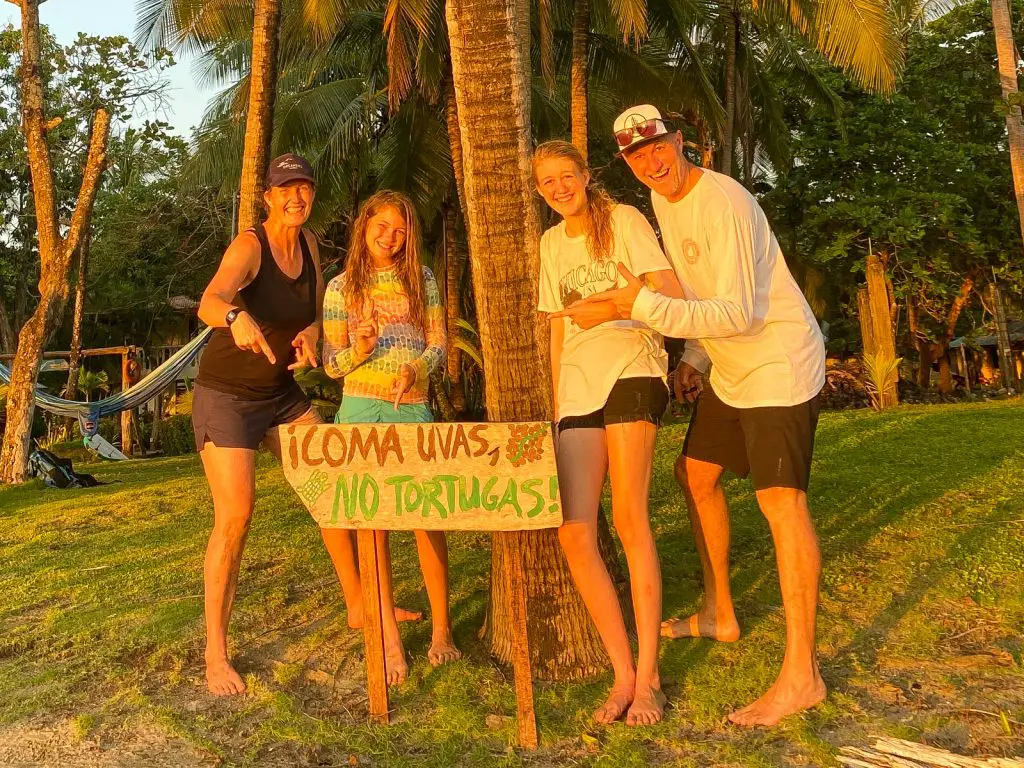
Nightly beach patrols are one of our main tasks. Split into two shifts, timed to the high tides we head out each day in darkness. Female turtles intent on laying their eggs instinctively choose high tide to drag themselves ashore to ensure their nests are as safe as possible dug deeply above the high tide line.
Our red headtorches illuminate soft spongy moss underfoot as we turn towards the hatchery – a rudimentary fenced area with secure plastic netting and barriers of sticks aimed to keep our or at least discourage predators. Here, precious turtle eggs dug up from the beach will be transplanted into a new nest, kept safe from both poachers and predators, until they emerge around 40 days later.




Carefully opening the secured gate, we check the remaining nests for signs of hatching turtles. Two particular nests, bright tags detailing date, batch no and number of eggs have been singled out for observing. Green wire netting circles each nest in anticipation of their emergence to hold the hatchlings – their 40 days of incubation almost over.
We see no signs of a disturbance either from hatchlings escaping from their nest however raccoons have been pacing around the entrance to the hatchery. Our red lights pick out the fresh prints clear in the soft sand to the entrance of the hatchery. It’s unusual our guide says, “normally we don’t have a problem with racoons here, especially compared to our sister hatchery over on the next beach where they have a real problems with racoons. There, they raid the hatchery climbing in over the fences and eating the eggs on a regular basis.”
There are only two nests left to hatch during our time here so I pray silently that the racoons don’t penetrate the barrier.
“The risk of predators is high on the beach the night the turtle eggs are laid. Racoons can smell fresh eggs easily” he tells us. “Once the team have dug up the eggs re-located them to the hatchery, the smell is less distinct but there is still a considerable threat over the next couple of nights becoming less so the older the eggs become.”

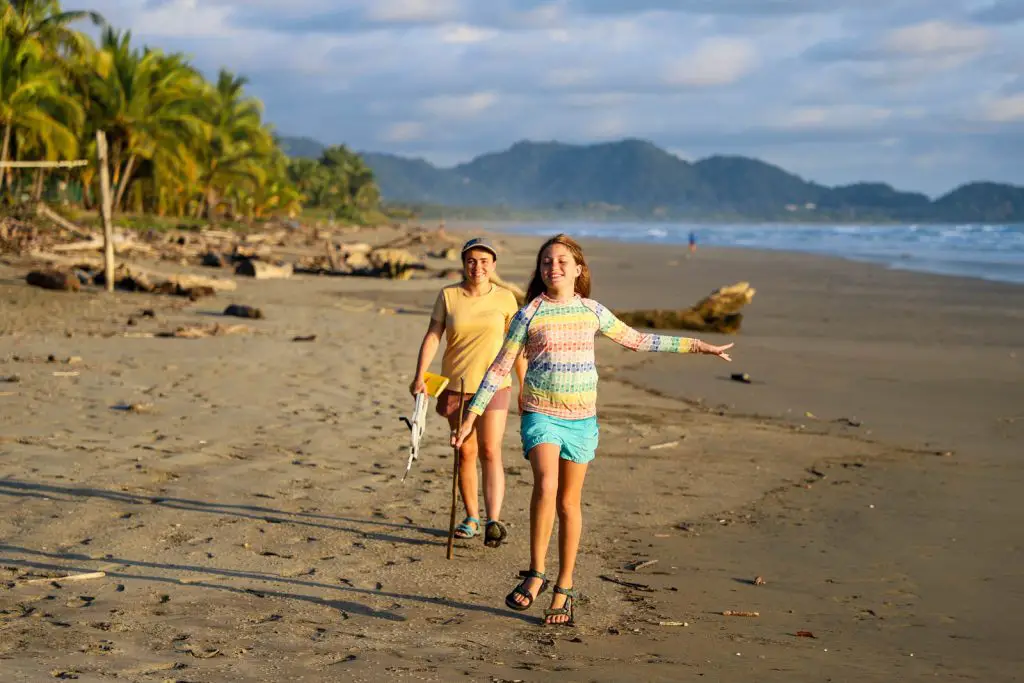


During the day we check the hatchery every couple of hours for signs of emerging turtles. My girls eagerly run down at regular intervals to check.
Bright green plastic netting forms a high fence around each nest due to emerge to make sure the turtles are kept together before releasing them into the ocean.
It’s a waiting game.
In the high season several nests hatch on each day. Now as the season winds down there are only two solitary nests left. As the volunteer research station is due to close soon, the eggs we find freshly laid during our night time patrols are now being taken to a wild hatchery – high above the tide line on the beach below trees where Mynor, a local who patrols with us, will check them several times a day.
The research centre run by Crema only operates here in the rainy season which is when nesting is most prolific for Olive Ridley turtles here on the Pacific coast. The research centre will have closed by the time the hatchings emerge from our nest re-locations during our time here.

My 14 year old girl walking like a zombie is groggy. Sleep fuzzing her brain still. My 11 year old is sound asleep having done the earlier 10pm shift with her father. I’m switched on. 100% alert. Scanning the beach for dark shadows, a silhoette hump of a shell. There? I ask once again in poor Spanish. Mynor, our local guide, gawaffs with amicable laughter yet again at my enthusiasm “no that’s just a log” he replies for the third time, his teeth shining white in the dark.
Our patrol behaviour differs greatly depending on whether we’ve been assigned to the early 10 or 11pm patrol or the graveyards shifts of 1-4am. During first patrols we chat amicably with our project co-ordinators or the local guides each gleaning a glimpse into each other’s lives or discovering new absorbing facts about the turtle conservation project. The later shifts are particularly brutal in that extracting yourself from a warm bed in the dead of night is not everyone’s cup of tea but it’s these patrols that have a particular magical quality. Mynor, our guide tonight, heads the patrol. A poacher in his youth Mynor is a success story to be celebrated. Poacher turned conservationist.
Mynor suddenly points up the beach ahead of us. I cannot see anything but blackness. Slowly my eyes acustomize and I can dimly make out tracks in the sand. A turtle has dragged herself up. We follow the tracks expecting to see her immense carapace silently laying her eggs. We find nothing and Mynor points out her return tracks. We have missed her. He instructs us to find a stick and we prudently jab at the sand feeling for any give – a sign the nest is below. Within a couple of minutes we’ve located the nest.
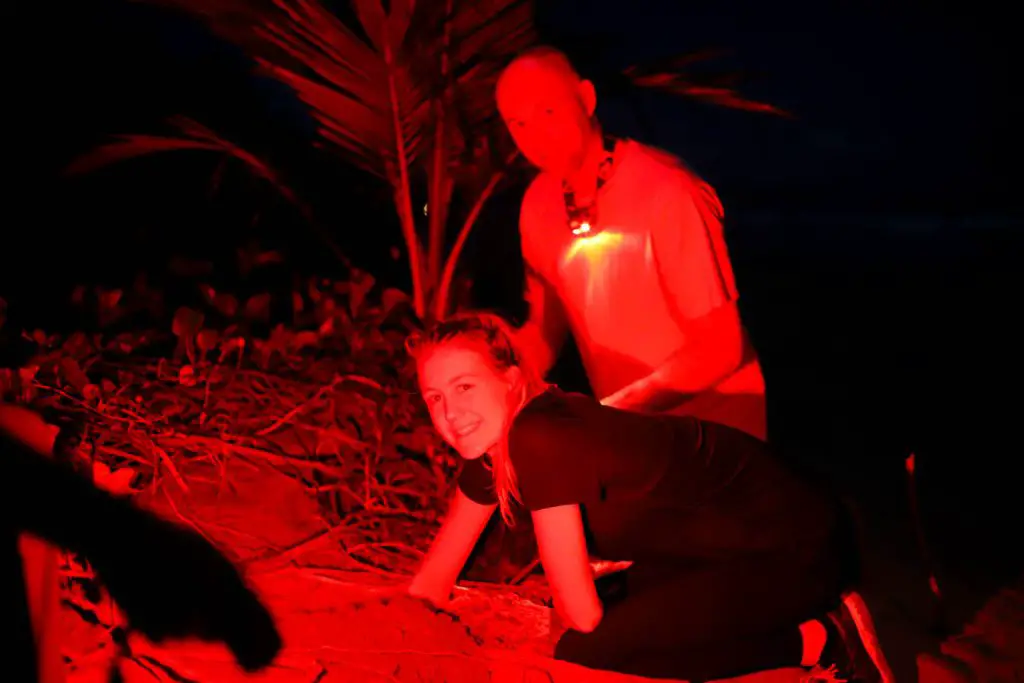

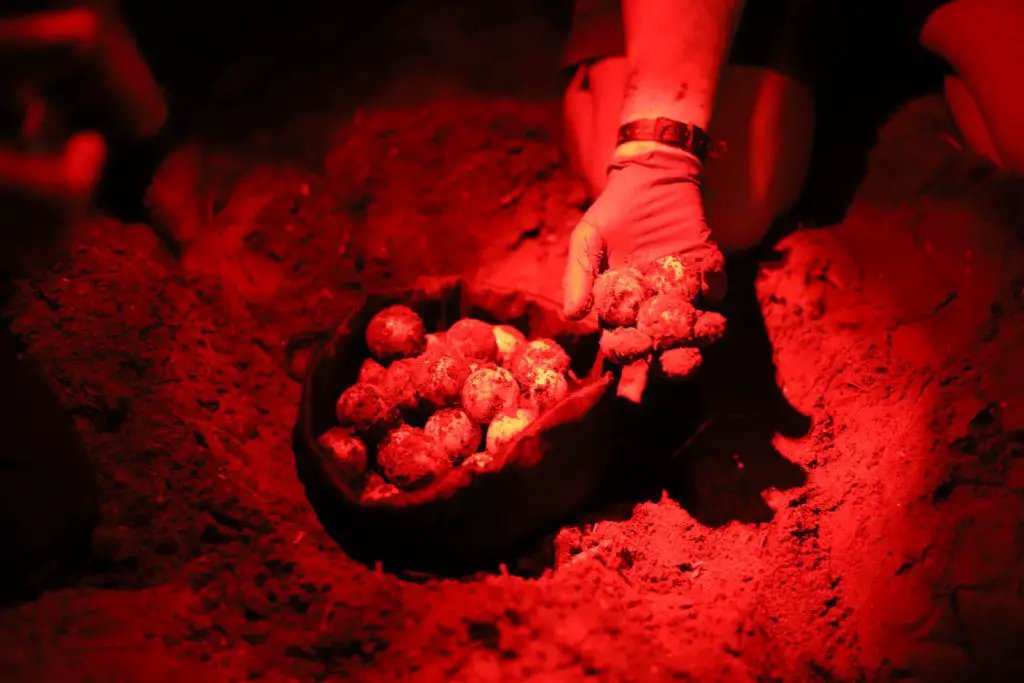
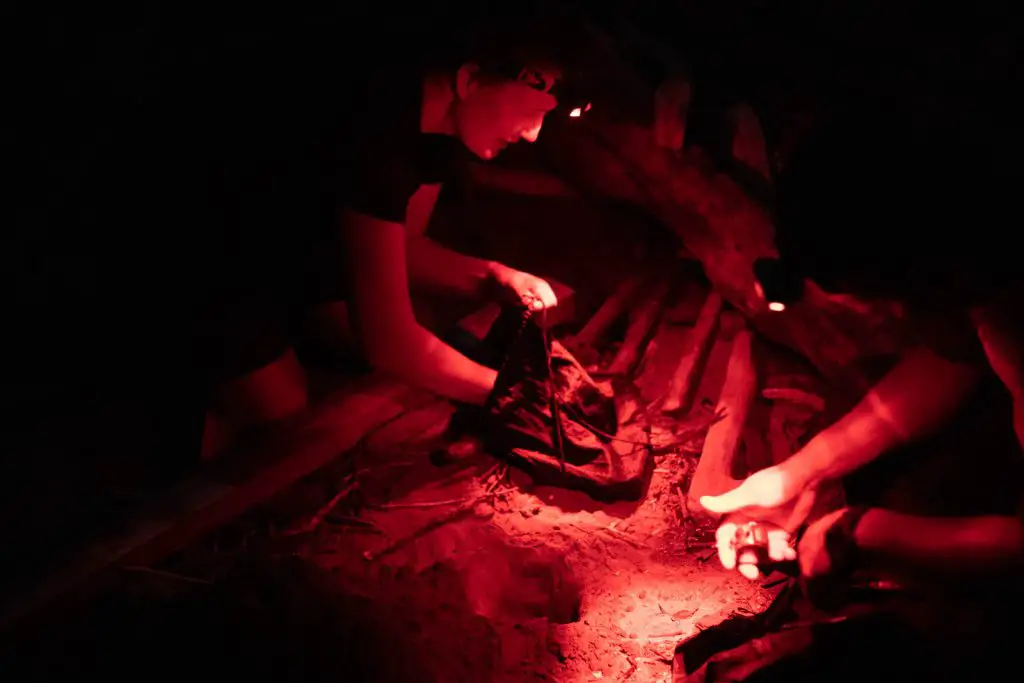

Wildlife volunteering in Costa Rica was an unforgettable experience for our family. Our two girls aged 11 and 14 loved the staff and especially releasing the hatchings!
Getting down on my hands and knees I dig carefully, scooping out the damp sand surprisingly well compacted down, into a heap next to me. Within a minute or two my hand finds the nest and clearing the hole carefully we work as a team as the eggs are withdrawn a few at a time. My daughter is shown how to use the clicker. Her eyes clear and bright – all signs of sleep instantly disappearing. She clicks for each egg I count as I withdraw handful after handful of ping pong ball like eggs. With a final swoop I check the nest. Our tally is 136 of perfectly round white olive ridley turtle eggs.
We are all victorious smiles. Teeth showing our heartfelt happiness of completing such a wondrous task as this. “One is one” Mynor tells us. Their unofficial motto.

It’s the end of the season so nests are few and far between now. Project co-ordinator Pablo tells us as we continue our patrol under the moonlit sky that “In high season patrols can be exhausting with so many nests to dig up. The end of the season partnered with a full moon (turtles rarely lay on and around a full moon) means there are fewer nests now.” He tells us we have just missed Arrivada – a mass nesting phenomenon of turtles (only ever Olive Ridley turtles) which happened on one of the projects other beaches – Ostinal – last week. Arrivada only happens on 9 beaches around the world. Incredibly the arrivada has only been happening in Ostinal for the last couple of years and so it became the ninth beach in the world to witness this incredible event.
This turtle conservation project is being run by CREMA, a rescue centre for endangered marine species set up in 2008. CREMA’s main purpose is research whilst their tour organisation travel agency, a Costa Rican charity, Turtle Trax helps finance the research by offering volunteers the chance to work on their turtle conservation project with Olive Ridley turtles.

CREMA’s main goal at the moment for turtle conservation in Costa Rica is collecting data to help turn this particular section of sea into a national park to create a sustainable fishing area. National parks book end this section of coast however within the beaches included in Turtle Trax’s locations unsustainable fishing is still being carried out to the turtle’s detriment. A family affair, both CREMA and Turtle Trax were set up by Isabelle and her marine scientist husband CREMA in 2008 and Turtle Trax in 2011. Their son Daniel heads up the volunteer side at Turtle Trax.
We slump back into comfortable silence with our heavy sack of precious cargo in one hand. We are all with our own thoughts. I marvel at the scene before us, turtle or no turtle – it’s stunningly beautiful and a world away from the tourist populated hot spots of Costa Rica. Authentic. Grass roots.
It’s times like these where life aligns. After 8 days on a turtle conservation project on a remote beach in the province of Guanacaste, life finally seems to have found a balance. Waking and falling asleep to the rhythm of the crashing waves, living every day in this paradise, the pulling moon and the daily tasks assigned to us.
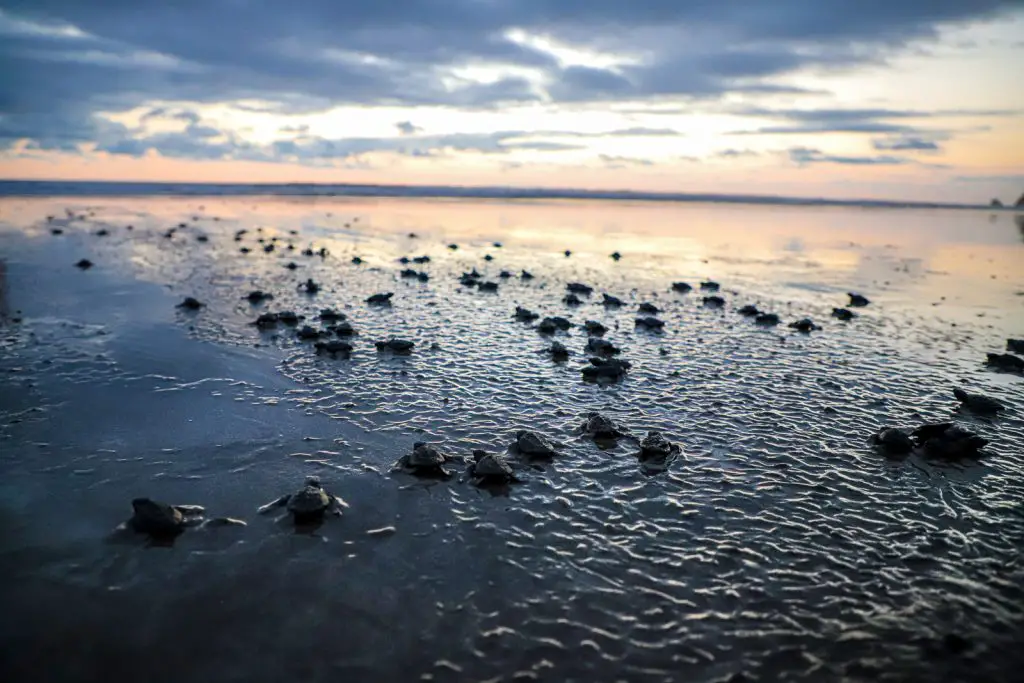
Patrolling is our main job so the rhythm of our day changes as duties are planned to rest around the heat of midday sun. Patrols are dual purpose – to take data of nesting turtles (carapace measurements & tagging) gently retrieve the eggs recording the number and re-locating them to the safety of the hatchery. The other is protect eggs from poachers.
It’s a move that is clearly needed. Anne, the research assistant here, an American in her twenties who joined the project 6 months ago tells me they still see nests empty, dug up by poachers, who normally make a quick getaway along the beach on motorbikes. “It’s been quiet of late with poachers” she says “perhaps because it’s the end of the olive ridley turtle season (the rainy season) and with that the beginning of the dry season seeing more people arrive to the beach. Home owners and hotels are beginning to open which makes it harder for poachers.”
We have been told not to approach poachers if our group come across one. In this incidents the local of our patrol either William, a 24 year old who spends his days carving up the surf here and quietly patrolling beaches at night here or Mynor, the older wise local who poached turtle eggs in his youth would approach the poacher. Working together with the local community is key here. “If we can get locals onboard then turtles have a greater chance”. One example of this is the success story of Behooko, a local fishing village community which CREMA used to send volunteers to, to help patrol the beaches. Now locals do daily morning walks to collect the data of how many turtles arrived the night before. Good beach for green turtles no-one there – no lights. Green turtles are really picky for choosing their beaches to lay.
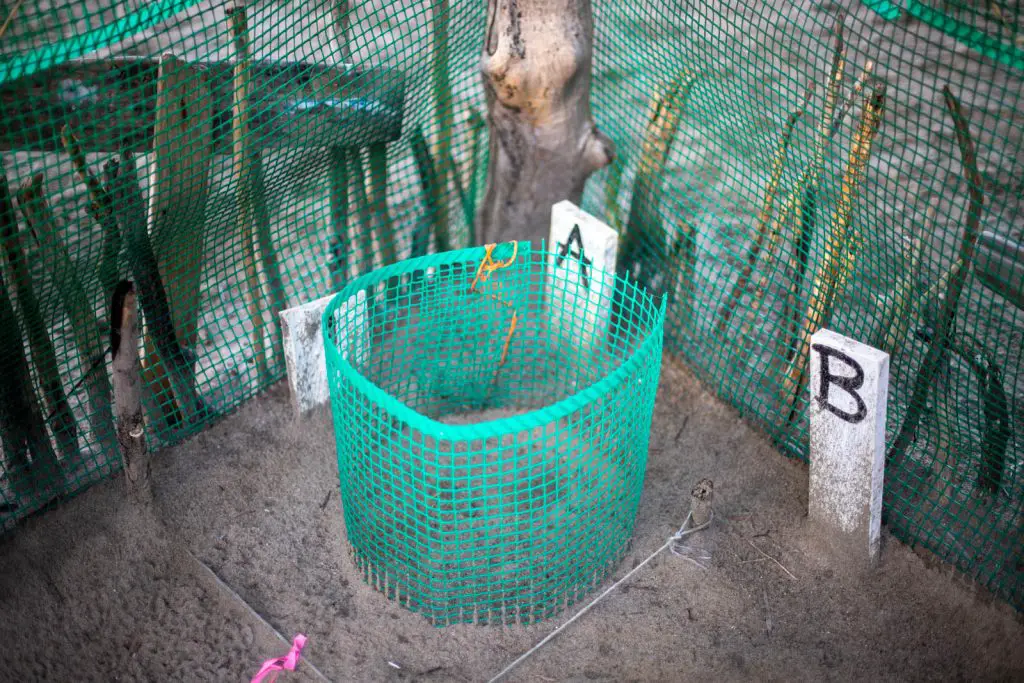
What tasks will volunteers be involved with on the Turtle Trax turtle conservation project in Costa Rica?
Volunteers will generally have their mornings free. This is amazing as with all other family volunteering holidays we’ve been on we’ve never had so much free time. I guess this is weighed out by nightly patrols however it was fantastic to have the choice to have a lazy lie in or get up early and take an early morning stroll on the beach, read a book and generally just chill until lunch time.
Some afternoons we would assist Pablo or Anne with nest excavations which involve digging up nests that have already hatched and examining the leathery white tatters of shells that remain. These are counted and any unhatched eggs investigated by opening them up and noting what stage the egg had developed to. Other afternoons beach cleans are organised. A rota is followed for daily equipment cleaning and keeping up with general housekeeping chores in the house.
What is accommodation like on the Turtle Trax turtle conservation project in Costa Rica & is there an age limit?
Turtle Trax can accommodate various different groups from a group of teenagers, families or even a gaggle of grannies. Age is not a limiting factor here. Accommodation options are also flexible. Volunteers can stay in the station house set immediately on the beach or pay extra to stay in more comfort in a private house two minutes away.
When can I book this turtle conservation project in Costa Rica?
The Olive Ridley turtle high season runs from July to mid December. Turtle Trax will only take volunteers during this time. Bear in mind that turtles do not like coming ashore at full moon so plan that into your dates if possible. Contact Turtle Trax to see when the infamous Arrivada may happen – you might just be able to coincide your trip with this amazing phenomenon!
Wildlife volunteering in Costa Rica is becoming very popular. There are many wildlife volunteering companies out there skimming plenty of profit from well meaning volunteers. Do your homework and go with a respected, local project.
The trip was provided by CREMA and Turtle Trax whose turtle conservation projects cost from $600 per person per week.
Read about our other wildlife family volunteering holidays
Family Volunteering in Sri Lanka with Elephants
Family Volunteering in Borneo replanting the rainforest to help Orangutans

